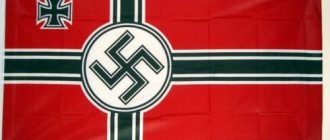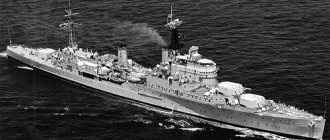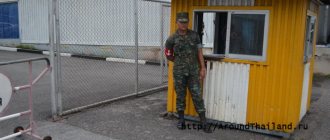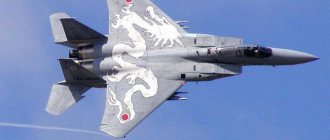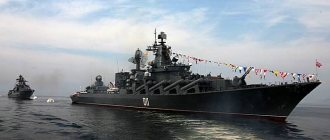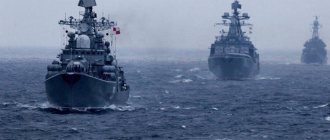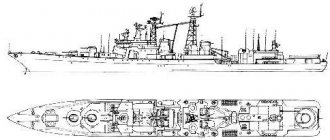Structure and deployment of the Russian Navy
The Russian Navy is structurally divided into 5 fleets:
- Northern Fleet – provides protection of Russia’s borders from the Arctic Ocean, the base is located in the city of Severomorsk. This fleet is the youngest, the flagship is the nuclear attack cruiser Peter the Great.
- The Baltic Fleet - stands on the protection of state borders on the western side, is the oldest fleet of the Russian Empire, which was founded by Peter I himself. The base is located in Kaliningrad. The flagship is the destroyer "Nastoychivy".
- Black Sea Fleet – located on the Black Sea coast with the main city of Sevastopol located in Crimea. The flagship is the cruiser "Moscow".
- Pacific Fleet - base is in Vladivostok. The fleet is carrying out necessary combat missions in the east of the country. The flagship is the cruiser "Varyag".
- Caspian Flotilla - the leadership is based in Astrakhan, the flagship is the missile ship "Dagestan".
Then and now
The military sailing ship "Eagle" is considered the official beginning of the emergence of the Russian Marine Corps. He had a team of 35 naval soldiers, designed to board enemy ships and perform patrol duty
In 1703, the history of the Marine Corps continued, then during the Northern War (1700-1721) intense struggle unfolded in the coastal and island regions. Formations and units of the Marine Corps experienced disbandment and re-establishment.
In 1939, the Marine Corps was created again. During the Great Patriotic War, formations and units of marines were actively used in amphibious operations and the defense of Soviet fleets. After the war, the units were disbanded again, but reappeared in the Navy in the early 1960s.
It is generally accepted that the Russian Marine Corps is one of the most dangerous and trained of the Navy's troops.
“Black Berets” combine all the positive qualities that a fighter should have. It is customary to compare “black berets” in terms of discipline and dedication to service only with the Airborne Forces. Modern Marines are mobile, impeccably trained and technologically equipped troops who are always ready to perform assigned missions with distinction. The regiments and divisions of these units have repeatedly confirmed their devotion and preparedness for any combat conditions.
Like all units, the Marine Corps has the following main tasks:
- Occupation and defense of a bridgehead on the coast.
- Reflecting attacks and defending naval bases.
- Repelling attacks and capturing enemy ships.
- Sabotage and espionage activities of a potential enemy.
The challenges don't end there; Marines often work in tandem with ground forces to achieve greater efficiency. The direction of MP is very narrow, but it is difficult to underestimate its contribution.
Aircraft carriers
TAVKR "Admiral Kuznetsov" is the only representative of Russian aircraft carriers. Unlike US nuclear attack aircraft carriers, the Russian ship has diesel and steam turbine engines, as a result of which it is significantly inferior to its American counterparts. Includes the following weapons:
- Su-33 fighter: weapons load 6.5 tons, including: R-73, R-27R/ER, R-27T/ET air-to-air guided missiles;
- Guided missiles Kh-41, P-800 “Onyx” air-to-ground;
- Unguided rockets 80mm, 122mm and 266mm;
- Bombs 500kg, 250kg and 100kg.
- Missile weapons: anti-aircraft missile launcher "Granit", air defense missile system "Kortik", air defense missile launcher "Kinzhal";
All aircraft carriers of Russia and the USSR read
Operational-strategic formations
The operational-strategic formations of the Russian Navy are:
- Baltic Fleet with headquarters in Kaliningrad. Ship composition: 3 diesel submarines, 2 destroyers, 3 corvettes, 2 patrol ships, 4 small missile ships, 7 small anti-submarine ships, 7 missile boats, 5 base minesweepers, 14 raid minesweepers, 4 large landing ships, 2 small landing ships VP, 6 landing boats. Total: submarines - 3, surface ships - 56.
- Northern Fleet with headquarters in Severomorsk. Ship composition: 10 nuclear-powered ballistic missile submarines, 3 nuclear-powered cruise missile submarines, 14 attack nuclear-powered submarines, 9 nuclear-powered special-purpose submarines, 1 diesel-powered special-purpose submarine, 6 diesel-powered submarines, 1 heavy aircraft-carrying cruiser, 2 heavy nuclear-powered submarines missile cruisers, 1 missile cruiser, 5 BOD, 1 destroyer, 3 small missile ships, 1 gun boat, 6 small anti-submarine ships, 4 sea minesweepers, 6 base minesweepers, 1 raid minesweeper, 4 large landing ships, 4 landing boats. Total: submarines - 43, surface ships - 39.
- Black Sea Fleet with headquarters in Sevastopol. Ship composition: 2 diesel submarines, 1 missile cruiser, 2 BOD, 3 SKR, 7 MPK, 4 MRK, 5 missile boats, 7 sea minesweepers, 2 base minesweepers, 2 raid minesweepers, 7 large landing ships, 2 landing boats. Total: submarines - 2, surface ships - 41.
- Pacific Fleet with headquarters in Vladivostok. Ship composition: 3 nuclear-powered ballistic missile submarines, 5 nuclear-powered cruise missile submarines, 5 multi-purpose nuclear submarines, 8 diesel submarines, 1 heavy nuclear-powered missile cruiser, 1 missile cruiser, 4 large anti-submarine ships, 3 destroyers, 8 small anti-submarine ships, 4 small missile ships, 11 missile boats, 2 sea minesweepers, 7 base minesweepers, 1 raid minesweeper, 4 large landing ships, 4 landing boats. Total: submarines - 21, surface ships - 50.
- Caspian flotilla with headquarters in Astrakhan. Ship composition: 2 patrol ships, 4 small artillery ships, 5 missile boats, 5 artillery boats, 2 base minesweepers, 5 raid minesweepers, 7 landing boats. Total: surface ships - 28.
The Northern and Pacific fleets are full-fledged ocean-going fleets. Their ships can conduct all types of naval operations in the far ocean zone. Only these two fleets of the Russian Navy have submarines and SSBNs. All Russian missile cruisers are also concentrated here except the flagship of the Black Sea Fleet, the RKR Moskva.
The Baltic and Black Sea fleets are predominantly maritime fleets. Their ships can also enter the World Ocean, but only in global peace, to carry out expeditionary operations against an obviously weaker enemy.
Submarines
Submarines are divided into the following types:
- Multi-purpose diesel-electric submarines - the Halibut, Varshavyanka and Lada types - currently have 18 ships in service. They carry Kalibr cruise missiles, ZM-54 and Onyx anti-ship missiles, and mine-torpedo weapons.
- Strategic missile submarine cruisers of the "Squid" and "Dolphin" type - 10 units, which are equipped with R-29R and R-29RM ballistic missiles, SET-65, SAET-60M and 53-65K torpedoes, Vodopad anti-ship missiles.
- Nuclear torpedo submarines, including those equipped with cruise missiles, of the following types: “Pike”, “Akula”, “Barracuda”, “Condor”, “Antey”, “Shchuka-B” and “Ash”. The total number of vessels in service is 17 units. It is armed with Kalibr cruise and anti-ship missiles, S-10 Granat and Oniks, and USET-80 homing torpedoes.
- SSBN "Borrey" - 3 vessels, including solid-fuel ballistic missiles "Bulava", torpedoes 533 mm and 324 mm, cruise missiles "Oniks" and "Caliber", etc.
Armament
The armament of the Russian Marine Corps today is quite rich and modern. If we talk about small arms, the Marines are not far from motorized rifles. The fighters in black berets are armed with a Kalashnikov assault rifle of the AKS-74M system of 5.45 mm caliber, Dragunov sniper rifles, RPKs and RPGs. VMPs are also equipped with AGS-17 “Plamya” grenade launchers.
The officers are armed with pistols of the PM system, Kalashnikov AKSU-74M assault rifles with a folding stock. The assault units of the coastal troops are armed with Mukha grenade launchers and Shmel flamethrowers.
Tanks and armored vehicles
If small arms do not sound so menacing, then armored vehicles will complement the arsenal:
- Main battle tank "T-72B";
- Modified tank "T-72B3";
- Airborne combat vehicle "BMD-2";
- Infantry fighting vehicle "BMP-2";
- Armored personnel carriers "MT-LB", "BTR-80", "BTR-82A", "BTR-82AM".
Artillery
The artillery of the Russian Navy is capable of instilling fear in even the bravest enemy. The arsenal includes:
- Mobile coastal missile systems "Redut", "Rubezh", "Bastion", "Bal".
- Coastal missile system "A-222 Bereg".
- Tactical missile systems "Tochka-U".
- Self-propelled artillery mounts 2S1 “Gvozdika”, 2S3 “Akatsiya”, 2S19 “Msta-S”, 2S9 “Nona-S”, 2S23 “Nona-SVK”.
- 2A36 "Gyacinth-B" guns.
- Howitzer 2A65 "Msta-B".
- Gun-howitzer-mortar 2B16 "Nona-K".
- 9K51 Grad and Uragan multiple launch rocket systems.
Anti-tank weapons
Anti-tank weapons are capable of destroying enemy equipment in a matter of seconds. For this purpose the following are provided:
- 152-mm self-propelled anti-tank missile system 9K123 "Chrysanthemum-S".
- 130 mm SPRK 9K114 "Sturm-S".
- 135-mm self-propelled anti-tank missile system 9K111-1 “Konkurs”.
- 152-mm anti-tank missile system 9K135 "Kornet".
- 100-mm anti-tank gun MT-12.
Air defense
The air also does not go unnoticed and air defense means are always ready to repel an attack from the air.
- Portable anti-aircraft missile system "Igla-S".
- Anti-aircraft self-propelled gun ZSU-23-4 "Shilka".
- Anti-aircraft missile systems "Strela-1", "Strela-10", "Osa-AKM", "Tor" and "S-400".
- Anti-aircraft missile and gun systems "Tunguska", "Pantsir-S1", "Pantsir-S2".
Cars and all-terrain vehicles
In addition to tanks, Black Beret units boast the means to quickly overcome obstacles and reduce the distance with the enemy.
- Trucks "Ural-4320" and "Ural-5557-01".
- ATV "AM-1" (note that ATVs have already been in service with the army for quite a long time).
- Snowmobiles "A-1" and T.
- Multi-purpose armored personnel carrier "MTLB-VMK".
- Two-section tracked all-terrain vehicles TTM-4902, TTM-4902PS-10, DT-10, DT-30, GAZ-3351, GAZ-3344-20 “Aleut” and DT-3P.
Engineering and special equipment
Heavy engineering and special equipment can pave a road where there was none, create a smoke screen, transport equipment and infantry across a river, and evacuate stuck or damaged equipment.
The Marines are armed with:
- Armored repair and recovery vehicles "BREM-L" and "BREM-K".
- Tracked minelayer "GMZ-3".
- Pontoon-bridge park "PMP".
- Tracklayer "BAT-2".
- Mechanized bridge complex "TMM-3".
- Single-bucket excavators "EOV-3523" and "EOV-3521".
- Robotic demining complex "Uran-6".
- Truck crane "KS-3574".
- Smoke machines "TDA-2K" and "TDA-M".
Every year, the Russian Government allocates huge funds to update and improve the weapons of the Marines, because this is the only way to maintain the highest level of technical equipment of combat units. Black Berets are the elite units of the Military Forces of the Russian Federation and everyone treats them with honor and respect. To be a Marine is to be a real man. “Where we are, there is victory” is the main motto of the Marine Corps.
Russian Navy Day
The official celebration of the Day of the Navy of the Russian Federation was established by Decree of the President of the Russian Federation in 2006. It is celebrated on the last Sunday of July.
Navy Day is a professional holiday for military sailors, military personnel of the Russian Navy, veterans, workers of shipbuilding and ship repair enterprises.
Many ceremonial events are planned for Navy Day, and naval parades will be held at fleet bases. Traditionally, the celebration involves concerts, congratulations from the command of the crews of ships and vessels, naval aviation squadrons, personnel of coastal units and everyone who serves in the Navy. Those who distinguished themselves are given awards, certificates and valuable gifts. Navy veterans also accept congratulations.

